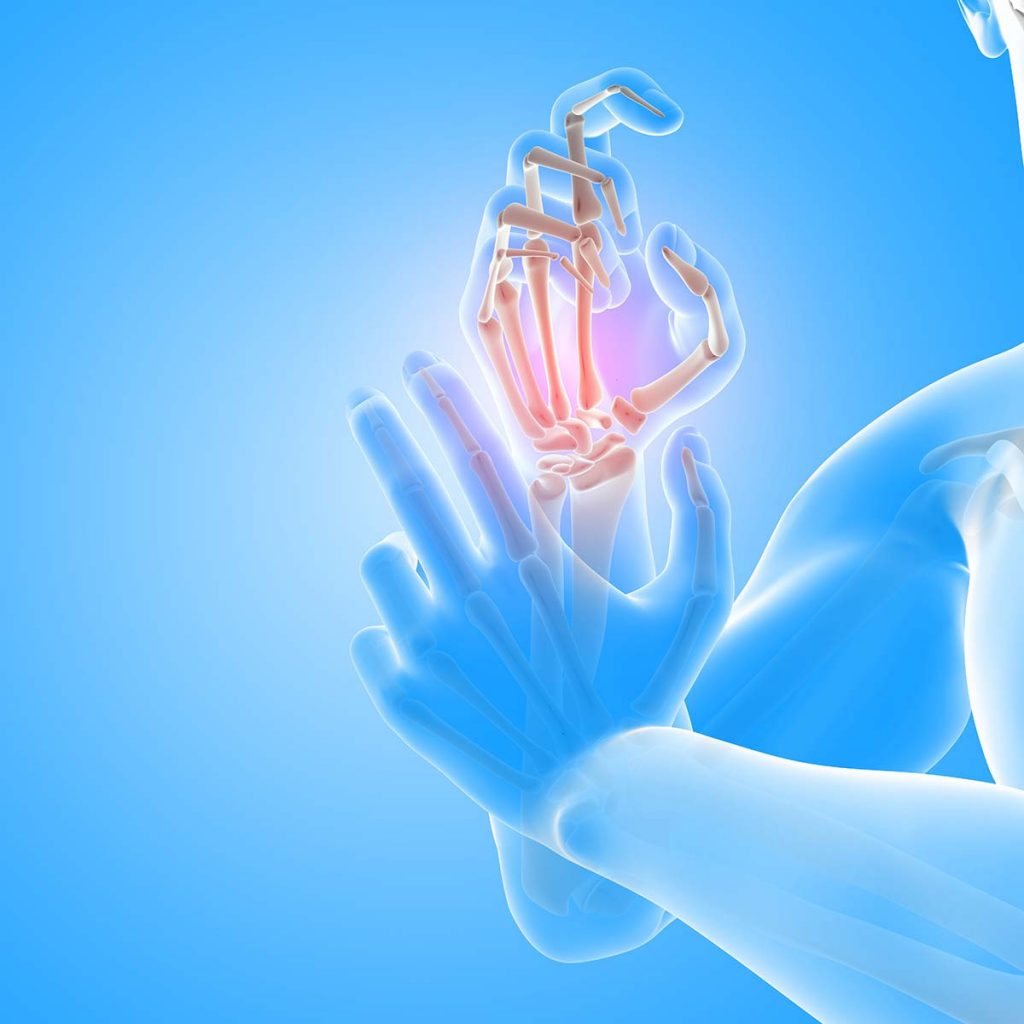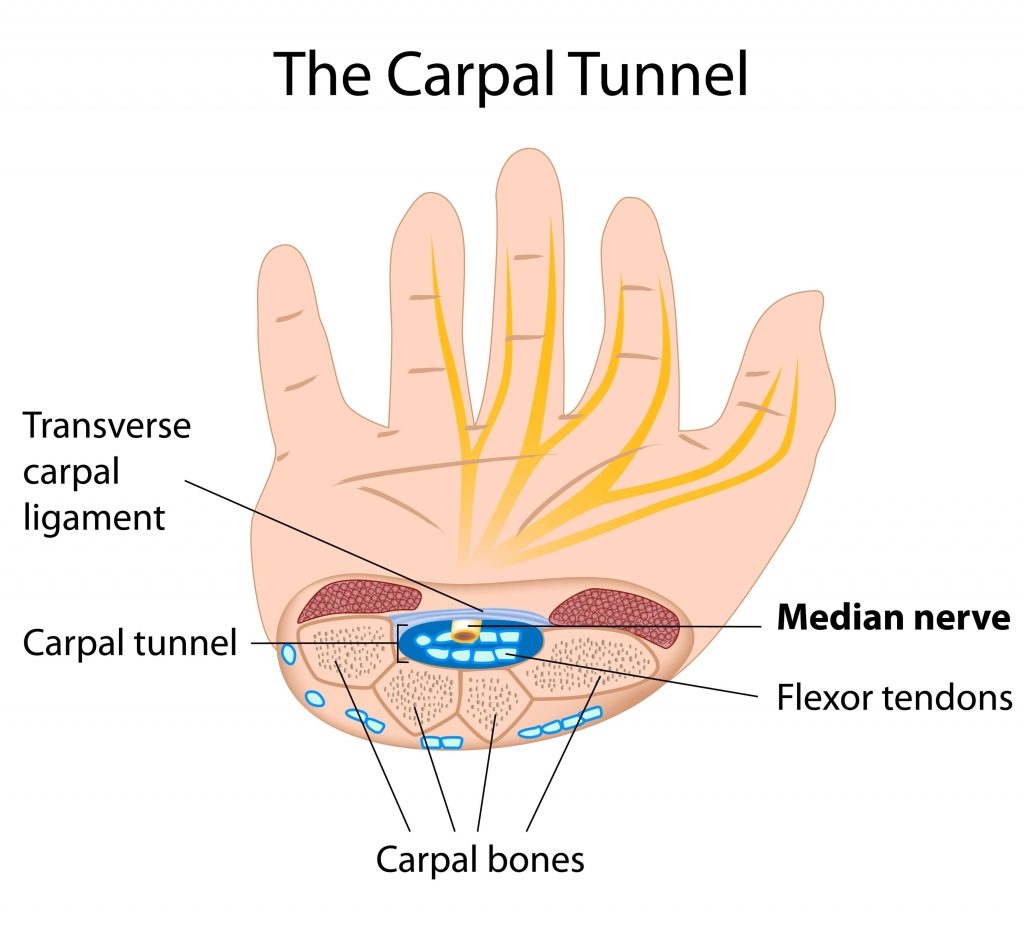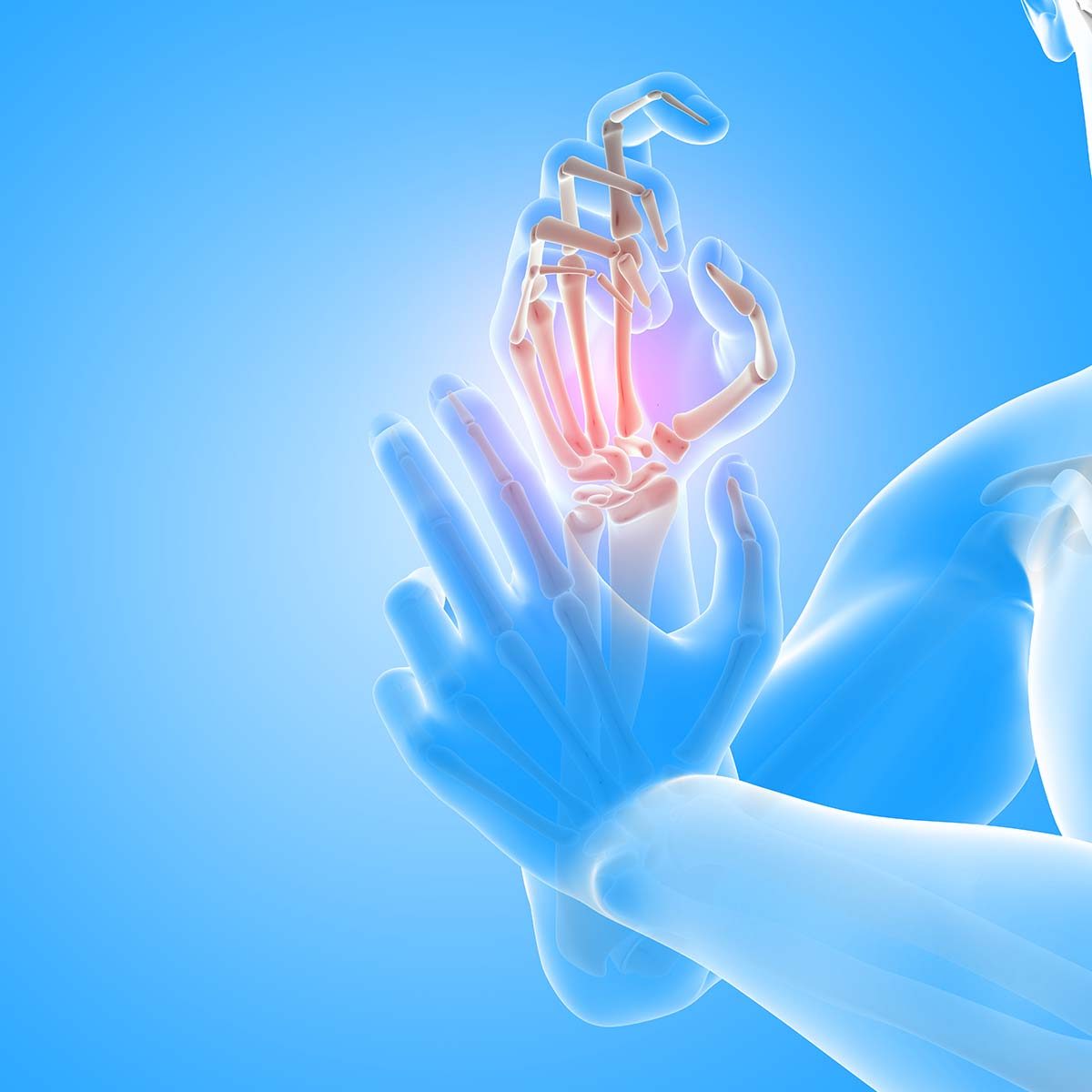Carpal Tunnel Syndrome
![]()
Call (703) 520-1031 or use the form to send us your contacts.
A common condition people experience is carpal tunnel syndrome. It is called a syndrome because it presents itself with a consistent group of symptoms in the wrist and hand, including pain and weakness. It is not a life-threatening condition, but it can interfere with the ability to work and limit other activities.

What is Carpal Tunnel Syndrome?
A median nerve runs from the forearm through the wrist and into the palm. The nerve is contained in a rigid, narrow passageway made of bones and ligaments at the base of the hand, which is called the carpal tunnel. On the palm side of each hand, the median nerve:
- Enables feeling of the thumb,
- Enables feeling to the index finger, middle finger, and part of the ring finger,
- Controls some of the small muscles located at the base of the thumb.
Any medical condition involving the hand can create serious difficulties with completing various tasks at home and work or while enjoying athletic or recreational activities.
Causes
The carpal tunnel is relatively narrow to accommodate the wrist size. Sometimes, the nerve gets compressed and inflamed, leading to the carpal tunnel condition. Nerve compression develops for a variety of reasons include:
- Repetitive motions that lead to thickening or swelling of tendons,
- A medical condition that causes the wrist to swell,
- A medical condition that obstructs blood flow,
- Medications causing swelling in the wrist,
- Wrist injury,
- Pregnancy causes fluid retention,
- Menopause causes fluid retention,
- Obesity.
Repetitive motions are one of the most frequent carpal tunnel syndrome causes, often occurring in people who do a lot of typing, perform the same repetitive task at work, and/or regularly use vibrating hand tools. The nerve compression is more likely to develop when the repetitive activity involves holding the hand lower than the wrist.
Some of the medical conditions leading to the carpal tunnel condition include rheumatoid arthritis, hypothyroidism, and diabetes. In rare cases, a tumor or cyst in the carpal tunnel causes nerve compression.
Symptoms
Carpal tunnel syndrome symptoms usually develop gradually, beginning with an odd tingling or burning sensation in the palm. It can occur in one or both hands. There may be numbness in the palm, and the palm itches for no apparent reason. Other symptoms include:
- Fingers served by the median nerve feel swollen when no outward swelling is present.
- Fingers served by the median nerve become challenging to use and sometimes are useless.
- Tingling in the wrist or hand.
- Loss of grip strength.
- Reduced ability to experience hot and cold through touch.
- Pain in the hand.
- Pain that begins in the wrist and moves up the arm.
- Ache or discomfort in the hand or wrist.
- A chronic condition that leads to wasted muscles located at the base of the thumb.
Since the symptoms appear gradually, it can take some time before a person realizes the condition is developing. One of the early symptoms for some people is waking up with a tingling feeling or numbness in the hand due to sleeping with a bent wrist.
Each person experiences different symptoms. However, once it develops, the condition often gets worse over time.

Diagnosis
The sooner the carpal tunnel condition is treated, the better. Without treatment, the median nerve could be permanently damaged. A physician performs several steps leading to a carpal tunnel syndrome diagnosis. Typically, the diagnosis process includes:
- Getting a medical history to determine if the patient does repetitive activities or other activities frequently involving the wrist and hand, or has a medical condition that could lead to carpal tunnel narrowing.
- Physical examination of the arms, shoulders, neck, arms, hand, and wrist to identify potential points of weakness or tenderness, swelling or warmth; fingers are tested for grip strength and feeling; wrist muscles are assessed for strength or indications of muscle atrophy (some medical conditions like inflammatory myopathies cause muscle inflammation in the wrist).
- X-rays are taken to rule out conditions like bone fractures or arthritis that have distorted bones.
- Completing routine laboratory tests to identify and/or rule out medical conditions like diabetes that can cause the carpal tunnel condition.
- Performing specific manual and medical tests that include:
- Tinel test – tapping or pressing on the median nerve to determine if the patient experiences tingling in the fingers,
- Phalen’s maneuver – flexing the wrist as far as possible to determine whether it causes numbness or tingling in the fingers,
- Electrodiagnostic tests measure the electrical activity in the median nerve and wrist muscles,
- Ultrasound imaging detects abnormal median nerve size,
- Magnetic resonance imaging (MRI) – shows the anatomy of all structures in the wrist.
Treatments
Early detection of carpal tunnel can often mean avoiding surgery. The sooner carpal tunnel syndrome treatment is initiated, the more likely non-surgical therapies will work. A carpal tunnel syndrome cure is possible.
Typical treatments include non-surgical and surgical options. Non-surgical treatments are always preferred because they are non-invasive. The earlier carpal tunnel syndrome is suspected, the more likelihood it can be successfully treated through options like the following:
- One of the first treatments is splinting the wrist to hold it still and straight while sleeping.
- Corticosteroid injection – corticosteroids are medications that can relieve pain.
- Nonsteroidal anti-inflammatory drugs (NSAIDs) – over-the-counter or prescription-strength NSAIDs can reduce inflammation and pain.
- Treat other medical conditions – treating conditions like rheumatoid arthritis may lessen the symptoms of carpal tunnel.
- Starting a regimen of carpal tunnel exercises – specific wrist and hand exercises can be done at home to relieve symptoms and stretch tight tendons.
There are several carpal tunnel syndrome exercises a patient can do at home that may prevent the condition from getting worse. They include flexing or stretching the wrist, fanning the fingers, and tendon or nerve gliding.
Surgery is always a last option, but if needed, there are two types of surgeries currently used. Both involve cutting the ligament to relieve pressure on the nerve. The two current surgical options are:
- Endoscopic surgery – the surgeon makes two incisions in the wrist and palm, inserts a tiny camera, observes the wrist structures, and cuts the carpal ligament that holds the joint together.
- Open-release surgery – the surgeon makes an incision in the wrist and cuts the carpal ligament to widen the carpal tunnel.
Gradual Improvement
For most people, the outcome of treatment for carpal tunnel syndrome is excellent. Though recovery from surgery may be gradual, the result is likely to be full recovery. This assumes there is no other medical condition involved. Carpal tunnel syndrome usually does not reoccur.
